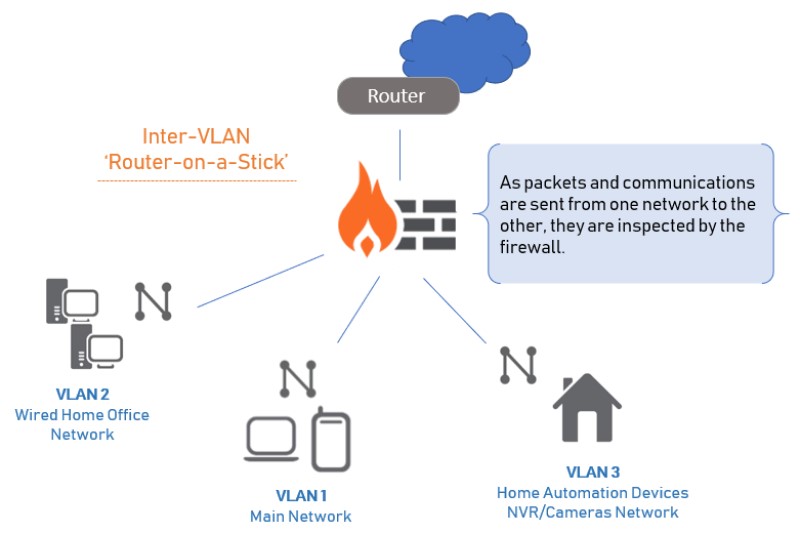

The “ spanning-tree portfast trunk” command on interface FastEthernet1/0/1 is used to bypass spanning-tree delay when connecting the interface to the router. (config-if)# description connection-to-GREEN-VLAN (config-if)# description connection-to-RED-VLAN (config-if)# spanning-tree portfast trunk (config-if)# switchport trunk encapsulation dot1q

(config-if)# description trunk-to-router-on-a-stick

Lets see the configuration below: SWITCH CONFIGURATION The switch port connected to the router must be a trunk port in order to be able to carry both VLANs towards the router port. The Router interface can be divided into two subinterfaces, with each subinterface belonging to the appropriate VLAN. The router uses just a single interface connected to a trunk port on the switch. In our example we use a router to provide Layer 3 connectivity as shown in our diagram. This can be accomplished either if the switch is Layer 3 (using Layer3 InterVLAN Routing) or if there is a router in place. Thus, if we want to provide network connectivity between the two VLANs we need to have a Layer 3 engine somewhere in the network. The first host belongs to Network 10.10.10.0/24 (VLAN10) and the second one to 20.20.20.0/24 (VLAN20).īy default, if the switch is just a normal Layer 2 switch the two hosts can not communicate between them because they belong to different VLANs and there is no routing. The two ports of the switch with the hosts connected to them (FE1/0/2 and FE1/0/3) must be access ports. Lets see the diagram below to get us started:Ī Cisco Layer 2 switch carries two VLANs (VLAN 10 – RED and VLAN 20 – GREEN) with two hosts connected to them as shown on the diagram above. This configuration is usually asked as a question in CCNA exams, so I hope it will be helpful for people preparing for certification.
#Pfsense router on a stick how to#
In this post I will explain how to provide routing between two VLANs on a simple Layer 2 switch using a Cisco router with just one interface.


 0 kommentar(er)
0 kommentar(er)
